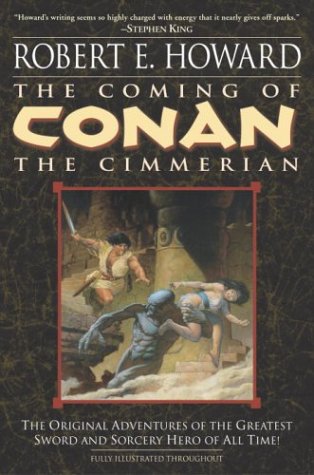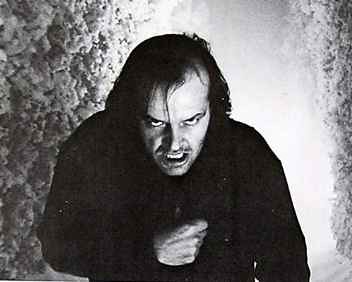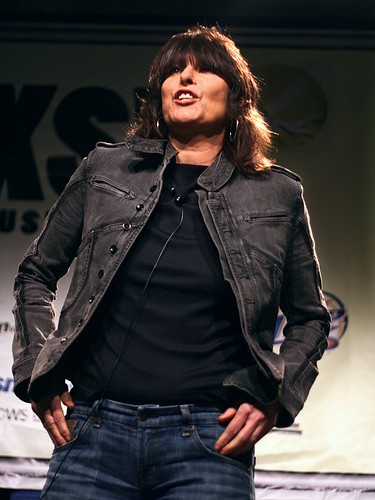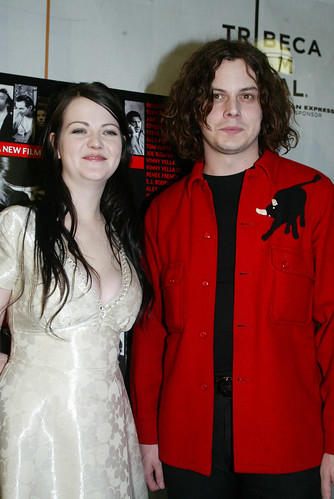Poem: Sunrise Over Worcester
5 Questions About: Jason Pinter
12 Signs That You Might Be A Banker
The 9 Worst Movies to Win Oscars
Book Review: Narrow Miss for "Above the Law"
5 Questions About: Screaming Blue Messiahs
What's Up With All the Fat, Naked Guys?
Thoughts from the Shadows: The Craziness of Publis...
How to Make a Damn Good Horror Movie
Literary Criticism
Fantastically Bad Cinema
Essays
Under God's Right Arm
June 2006
July 2006
August 2006
September 2006
October 2006
November 2006
December 2006
January 2007
February 2007
March 2007
April 2007
May 2007
June 2007
July 2007
August 2007
September 2007
October 2007
November 2007
December 2007
January 2008
February 2008
March 2008
April 2008
May 2008
June 2008
July 2008
August 2008
September 2008
October 2008
November 2008
December 2008
January 2009
February 2009
March 2009
Alcoholic Poet
Baby Got Books
Beaman's World
BiblioAddict
Biblio Brat
Bill Crider's Pop Cultural Magazine
The Bleeding Tree
Blog Cabins: Movie Reviews
A Book Blogger's Diary
BookClover
Bookgasm
Bookgirl's Nightstand
Books I Done Read
Book Stack
The Book Trib
Cold Hard Football Facts
Creator of Circumstance
D-Movie Critic
The Dark Phantom Review
The Dark Sublime
Darque Reviews
Dave's Movie Reviews
Dane of War
David H. Schleicher
Devourer of Books
A Dribble of Ink
The Drunken Severed Head
Editorial Ass
Emerging Emma
Enter the Octopus
Fatally Yours
Flickhead
The Genre Files
The Gravel Pit
Gravetapping
Hello! Yoshi
HighTalk
Highway 62
The Horrors Of It All
In No Particular Order
It's A Blog Eat Blog World
Killer Kittens From Beyond the Grave
The Lair of the Evil DM
Loose Leafs From a Commonplace
Lost in the Frame
Little Black Duck
Madam Miaow Says
McSweeney's
Metaxucafe
Mike Snider on Poetry
The Millions
Moon in the Gutter
New Movie Cynics Reviews
Naked Without Books
A Newbie's Guide to Publishing
New & Improved Ed Gorman
9 to 5 Poet
No Smoking in the Skull Cave
Orpheus Sings the Guitar Electric
Polly Frost's Blog
Pop Sensation
Raincoaster
R.A. Salvatore
Reading is My Superpower
Richard Gibson
SciFi Chick
She Is Too Fond Of Books
The Short Review
Small Crimes
So Many Books
The Soulless Machine Review
Sunset Gun
That Shakesperherian Rag
Thorne's World
The Toasted Scrimitar
This Distracted Globe
Tomb It May Concern
2 Blowhards
Under God's Right Arm
A Variety of Words
The Vault of Horrr
Ward 6
When the Dead Walk the Earth
The World in the Satin Bag
Zoe's Fantasy
Zombo's Closet of Horror
Bookaholic Blogring
Power By Ringsurf

The
A 2003 study done by UNICEF ranked the U.S. 18 out of 24 developed countries in education. Other studies have shown the
There is a lot to fix, but one problem with
Yet, the state still struggles with public education. Recently, the town of
This, mind you, from one of the best ranked states in the country.
Here’s one big problem:
This system puts tremendous strain on local resources and mandates that property owners foot the bill for public schools. So districts that don’t have solid local management – like
Wouldn’t it make more sense to centralize education?
I can already see the hyper-privileged foaming at the mouth – worrying about their children getting the same education as the poor. But it’s the best system. Why should there be enormous gaps in what we pay for educating students from town to town? For example, in  nds $16,700 – a difference of $8,800!
nds $16,700 – a difference of $8,800!
Think of the cost savings public education would receive simply by the buying power one large entity would receive for buying books, pencils, and other supplies. Think about the savings in eliminating the support systems in place in every district – superintendents, payroll, accountants, lawyers, support staff, etc.
Centralized education is what makes countries like
Centralizing curriculum would force states to really think about how to educate children – to debate about what subjects are important. No longer would education be forced to conform to “local” standards. States would have a common consensus on what children should be learning at each grade level. Parents will no longer be held hostage by under-performing districts – or renegade superintendents.
Forcing small local governments to educate children is an out-dated model of a bygone era. It’s time to modernize, centralize, and standardize for the success of all children.
Read our essay on the Iraq War here
Labels: Education, Essay, Schools
 StumbleUpon |
StumbleUpon |
 del.icio.us |
del.icio.us |
 Technorati |
Technorati |
The Wicked Scary Horror Story Contest
Our Wicked Scary Horror Story Contest concluded on October 16. We received a whopping 50 plus in entries from all over the world. We announced our amazing winners on Halloween Week 2007. You can read the winning selections here:
First Place: Undead Zombie General -- "Cattle Mutilations" by Tiffany Biles
Second Place: Animated Corpse Colonel -- "By Your Side" by Shannon Fay
Third Place: Rotting Carcass Captain -- "Infection" by Michael Carr
A special thanks to everyone who entered. Stay tuned for more writing contests through-out 2008. You can also see the results of our last contest here: The Short, Short Story Contest.
 StumbleUpon |
StumbleUpon |
 del.icio.us |
del.icio.us |
 Technorati |
Technorati |
(In 1888, a mysterious, deadly stranger killed five and maybe up to 12 prostitutes in the Whitechapel section of
DaRK PaRTY: Jack the Ripper has become a cultural icon and his name is synonymous with serial murder. Why do you think this case has endured for so long?
Stephen: It’s not easy to explain why some cases become celebrated and others don't. In general, however, those cases that remain unsolved tend to last longer in the public's imagination. In this case it was probably a mixture of that as well as it simply being the right case at the right time, in the right place. There's this romantic view of late-Victorian London, popularized in Sherlock Holmes novels, of foggy cobblestone streets, bumbling police bobbies and the "ingenious" criminal who outwitted them all and taunted them mercilessly by writing letters and dropping clues. The reality was quite a bit different, but there's always been a wide gap between the "popular" view of Jack the Ripper and the actual hard facts of the Whitechapel murders.
DP: It is generally accepted that Jack the Ripper killed five women in 1888 -- but there are at least a dozen other women who may have been victims. In your opinion, how many victims did Jack the Ripper murder and who were they?
Stephen: The five generally accepted victims are Nichols, Chapman, Stride, Eddowes and Kelly. Stride is sometimes considered not to be a Ripper victim by some researchers, while others tend to think Kelly was perhaps murdered by a copycat. Personally I tend to think that Nichols, Chapman, Eddowes and Kelly were more than likely murdered by the same man. I'm split 50/50 on Stride, and I'm also split about 50/50 with Tabram, who was killed three weeks before Nichols. So I'd have to say four murders definitely, and I leave open the possibility for as many as six.
DP: Let's talk about the letters. Three letters allegedly from Jack were sent to the
Stephen: I tend to think the Ripper didn't actually write any of the letters. There's strong evidence that the "Dear Boss" letter (from which the name "Jack the Ripper" arose) was actually penned by a journalist, and we have a half-dozen or more people who were actually prosecuted for hoaxing Ripper letters (interestingly enough, several of them were women). The phenomena of these "Ripper letters" seems to have been sparked initially by a press invention which then quickly snowballed into a sort of mass public hysteria, with something on the order of 600+ letters being sent to the press, police and even private citizens, purporting t o be from the killer.
o be from the killer.
Some did it to be a nuisance, other's were likely quite deranged, but a surprisingly large percentage of people appear to have put pen to paper as a means of frightening or at least inconveniencing their enemies. One fourteen-year-old servant girl hoaxed several such letters and sent them to her master, threatening to murder him - apparently she wasn't too fond of her working conditions.
DP: There are many theories about who was really Jack the Ripper. Who do you think are the best suspects?
Stephen: Of the hundreds of suspects put forth, I don't believe the case against any of them to be particularly compelling. The problem is that the police at the time were looking for a lunatic - to them, literally someone foaming at the mouth.
DP: Do you think the mystery of Jack the Ripper will ever be solved? Why or why not?
Stephen: At the time there was very little understanding of the serial killer phenomenon. Today we know that many serial killers blend quite well into society - look at Ted Bundy, John Wayne Gacy, or even the BTK Killer, Denis Rader. Neighbors and coworkers interviewed after the fact are often dumbfounded - "I never would have suspected him" is a commonly-heard phrase. If we assume Jack the Ripper was cut from the same cloth, then he probably arouse very little - if any - suspicion back in 1888, and may not ever have been brought to the attention of the press or police. If that's the case, then in all likelihood the Ripper's real name is lost to history.
Read our very first 5 Questions About feature here
Labels: 5 Questions, interview, Jack the Ripper, Stephen P. Ryder
 StumbleUpon |
StumbleUpon |
 del.icio.us |
del.icio.us |
 Technorati |
Technorati |
Joan Jett
DOB: September 22, 1958
Hometown:
Resume: As a teenager, Jett founded the band the Runaways with Lita Ford. The Runaways opened for big acts like Cheap Trick, Van Halen and Tom Petty. The band broke up after 5 LPs when they couldn’t crack through in the
Best Album: Up Your Alley (1988)
Best Song: “I Love Rock n’ Roll” (1981)
Second Best Song: “I Wanna Be Your Dog” (1988)
Damn Neat Fact: She ran away from home at age 15 after she discovered her boyfriend was sleeping with her mother.
Damn Neat Fact #2: Jett claims Siouxsie Sioux as an inspiration.
Coolest Moment: Have you seen her performing Gary Glitter’s “Do you Wanna Touch Me?”
Ann & Nancy Wilson
Real Name: same
DOB: Ann – June 19, 1950; Nancy – March 16, 1954
Hometown: Ann –
Resume: Formed the band Heart with Steve Fossen and brothers Roger and Mike Fisher.
Best Album: Dreamboat Annie (1976)
Best Song: “Magic Man” (1976)
Second Best Song: “Barracuda” (1977)
Damn Neat Fact: After Heart’s debut album was released rumors circulated that Ann and Nancy were witches and the song “Magic Man” was about Satan seducing a baby.
Damn Neat Fact #2: A second rumor in 1977 had the sisters as lesbian lovers. Ann was so pissed off about the rumor that she wrote the lyrics to “Barracuda” about it.
Coolest Moment: Ann and Nancy dated the Fisher brothers during Heart’s heyday, but eventually fired them both from the band.
both from the band.
Shirley Manson
Real Name: Shirley Ann Manson
DOB: August 26, 1966
Hometown:
Resume: She was the lead singer of Angelfish and then was recruited to become the lead singer and front person for Garbage.
Best Album: Version 2.0 (1998)
Best Song: “Push It” (1998)
Second Best Song: “Vow” (1995)
Damn Neat Fact: Her father was a scientist who was involved in cloning the first animal – a sheep named Dolly.
Damn Neat Fact #2: She was bullied as a child for having red hair and green eyes and used to cut herself as a result.
Coolest Moment: The video “Push It.”
Deborah Harry
DOB: July 1, 1945
Hometown:
Resume: Lead singer of the alternative band Blondie.
Best Album: Parallel Lines (1978)
Best Song: “
Second Best Song: “Rip Her to Shreds” (1976)
Damn Neat Fact: Harry was a Playboy bunny.
Damn Neat Fact #2: She starred in David Cronenberg’s bizarre 1983 cult movie “Videodrome.”
Coolest Moment: Becoming a punk icon in the 1970s.
Kim Deal
Real Name: Kimberly Ann Deal
DOB: June 10, 1961
Hometown:
Resume: Bass player for the alt-rock band the Pixies and lead singer and guitarist for The Breeders.
Best Album: Doolittle by the Pixies (1989)
Best Song: “Cannonball” with the Breeders (1993)
Second Best Song: Debaser with the Pixies (1989)
Damn Neat Fact: Deal became the bass player for the Pixies after answering a newspaper add. She took on the stage name of Mrs. John Murphy.
Damn Neat Fact #2: She founded the Breeders with her twin sister Kelley.
Coolest Moment: One upping Pixies frontman Black Francis by releasing the Breeder’s album “Last Splash” and showing the world who the real talent on the Pixie’s was and remains.
Chrissie Hynde
Real Name: Christine Ellen Hynde
DOB: September 7, 1951
Hometown:
Resume: Lead singer and front person for the band The Pretenders.
Best Album: Learning to Crawl (1984)
Best Song: “Middle of the Road” (1984)
Second Best Song: “My City Was Gone” (1984)
Damn Neat Fact: She had a daughter with Ray Davies of the Kinks, but ended up marrying Jim Kerr of the Simple Minds.
Damn Neat Fact #2: Drunk and feeling horny, she groped Kim Deal after mistaking her as a man.
Coolest Moment: Allowing Rush Limbaugh to use her song “My City Was Gone” for his intro when he agreed to donate money to PETA. How’s that for irony?
Real Name: Christa Paffgen
DOB: October 16, 1938 (died July 18, 1988)
Hometown:
Resume: Singer for The Velvet Underground, but also a model and actress (and friend of Andy Warhol)
Best Album: The Velvet Underground and Nico (1967)
Best Song: “Sunday Morning” (1967)
Second Best Song: “Heroin” (1967)
Damn Neat Fact: Slept with Jim Morrison of the Doors, Brian Jones of the Rolling Stones, Lou Reed of The Velvet Underground and Iggy Pop (among others).
Damn Neat Fact #2: Starred in Andy Warhol’s experimental film “Chelsea Girl.”
Coolest Moment: Recorded one of the most influential albums of all time in The Velvet Underground and Nico.
Siouxsie Sioux
Real Name: Susan Janet Ballion
DOB: May 27, 1957
Hometown:
Resume: Lead singer of the band Siouxsie & the Banshees and of The Creatures.
Best Album: Tinderbox (1986)
Best Song: “Cities in Dust” (1986)
Second Best Song: “Peek-a-Boo” (1988)
Damn Neat Fact: Shirley Manson claimed Siouxsie as a major influence (along with Sinatra).
Damn Neat Fact #2: She was once punched in the face for wearing a swastika armband.
Coolest Moment: Becoming a major influence of bands like The Cure, Joan Jett & Blackhearts, Shirley Manson and Garbage and scores of other shoe gazer and Goth bands.
Real Name: Meghan Martha White
DOB: December 10, 1974
Hometown:
Resume: Drummer and back-up singer for the duo The White Stripes
Best Album: White Blood Cells (2001)
Best Song: “Fell in Love with a Girl” (2001)
Second Best Song: “Seven Nation Army” (2003)
Damn Neat Fact: Claimed to be the sister of her fellow White Stripes musician Jack White even though they were married.
Damn Neat Fact #2: She divorced Jack in 2000, but didn’t quit the band.
Coolest Moment: She was featured on “The Simpson’s” in an episode called “Jazzy and the Pussycats.”
Wendy O. Williams
Real Name: Wendy
DOB: May 28, 1949 (died April 6, 1998)
Hometown:
Resume: Lead singer of the punk band the Plasmatics.
Best Album:
Best Song: “Corruption” (1980)
Second Best Song: “Masterplan” (1981)
Damn Neat Fact: She was nominated for a Best Female Rock Vocal Grammy in 1985.
Damn Neat Fact #2: She liked to strip on stage and use chain saws to cut her guitars in half.
Coolest Moment: Arrested in
Stevie Nicks
Real Name: Stephanie Lynn Nicks
DOB: May 26, 1948
Hometown:
Resume: Singer and songwriter with Fleetwood Mac, but also had a long solo career.
Best Album: The Wild Heart (1983)
Best Song: “Stop Draggin’ My Heart Around” (1981)
Second Best Song: “Stand Back” (1983)
Damn Neat Fact: Persistent rumors that she is witch have been denied by Stevie several times.
Damn Neat Fact #2: Courtney Love counts Stevie as one of her influences.
Coolest Moment: Recorded one of the greatest rock albums ever with Fleetwood Mac – “Rumors” – in 1977.
Courtney Love
Real Name: Courtney Michelle Harrison
DOB: July 9, 1964
Hometown:
Resume: Married to Kurt Cobain of Nirvana and lead singer of the alt-punk band Hole.
Best Album: Celebrity Skin (1998)
Best Song: “Doll Parts” (1994))
Second Best Song: Celebrity Skin” (1998)
Damn Neat Fact: Hole’s album “Live Through This” was released four days after the suicide of Cobain in 1994.
Damn Neat Fact #2: Once told Rolling Stone magazine that she needed to be saved.
Coolest Moment: Going topless in the 1996 film “The People vs. Larry Flynt.”
See our picks for the 10 Worst Videos from MTV
 StumbleUpon |
StumbleUpon |
 del.icio.us |
del.icio.us |
 Technorati |
Technorati |
No disrespect is meant toward the late Robert Ludlum, but he was only a slightly above average writer. He could plot with the best of them – in fact, it was his greatest skill as a novelist. However, his characters rarely rose above stock and always remained two-dimensional.
But give him major kudos for giving us Jason Bourne – because without Ludlum we would never have gotten three spectacular Jason Bourne movies starring Matt Damon: “The Bourne Identity” (2002), “The Bourne Supremacy” (2004), and this year’s “The Bourne Ultimatum.”
The movies are loosely based on Ludlum’s overwritten novels, but he did come up with the premise and the character.
Of the three movies, “The Bourne Supremacy” remains the best (although “Ultimatum” was excellent – falling far shy with the disappointing ending).
Oddly enough, Matt Damon, as uber-spy Jason Bourne, is wildly miscast. He’s too young, too short, too husky, and too all-American for the role of a ruthless, sophisticated government agent. Yet, amazingly, he pulls it off – in fact, he more than pulls it off.
Damon seethes on screen. His tightly contained rage bubbles to the surface with perfectly timed nuance. He plays Bourne as methodical – a man who can compartmentalize his pain, panic, and emotion – and focus on completing the task at hand – at any cost.
It’s the moments after the brutal action – after he uses his bare hands to beat and strangle to death a rogue agent, for example, when he catches a glimpse of himself in the mirror that we can see the human being within. Matt Damon can act.
In the “Supremacy,” director Paul Greenhouse gives us a compelling, reasoned thriller and a cast of A-list supporting actors that know how to chew their way through a scene. Greenhouse never forgets that characters are what sell an action movie. You have to care about the people to make the action work.
Greenhouse is able to develop his characters without slowing down the action. When Bourne and his girlfriend, Maria (played by Franka Potente), are discovered hiding in
Bourne is convinced their cover has been blown – but Maria isn’t. She’s gotten comfortable playing house with Bourne and doesn’t want it to end.
“We’re blown,” he tells her.
You can see her disbelief in her expression. She can’t believe it. She’s been living with his nightmares, his paranoia for more than two years. He glances at her, sweating and frenzied: “This is real,” he says.
They argue and when Maria tells him he has a choice – that he doesn’t have to run anymore – Bourne is almost ready to believe her when she is shot in the head by the hitman’s long-range rifle.
That last exchange says more about their relationship (about the trust and love between them) than any drawn-out and unnecessary dialog scene. It’s a testament to Greenhouse’s skill as a director and the abilities of Damon and Potente as actors.
Joan Allen as the honest, driven CIA assistant director Pamela Landy and Brian Cox as the company louse Ward Abbott light up the screen. Their verbal jousts and one-upmanship give the movie an authentic feel. It’s this insider politicking among the agents that build the tension to frenzy.
If you haven’t seen any the Bourne movies – you should. They are better than any of the Bond movies (with the possible exception of “Casino Royale”) and never fall into the comic book silliness of Tom Cruise’s Mission Impossible films.
There have been three Bourne movies – and one can only hope there will be a fourth.
Read our Ode to "Fight Club" here
 StumbleUpon |
StumbleUpon |
 del.icio.us |
del.icio.us |
 Technorati |
Technorati |
By: Rev. Colson Crosslick
The greatest threat to Christianity today isn’t homosexuality (although it may be a close second). Nor is it the runaway train of sex, drugs, and loose morals being pumped out as movies and video games from
This misguided “theory” has migrated from the intellectual corners of the scientific community to the streets of mainstream
Unfortunately, those gracious days are behind us. Now we are faced with an onslaught of God Haters like authors Daniel Dennett (“Breaking the Spell”) and Richard Dawkins (“The God Delusion”). Part of me feels bad for these alleged intellectuals (Dennett is a philosopher – whatever that means! – and Dawkins is a biologist) because they will be burning in hell for all of eternity.
Bring some marshmallows, boys!
Both of them argue that God does not exist and that the human need for religion is some kind of biological impulse gone awry. Clearly both men have not read the Bible – the word of God. Hard to argue that God doesn’t exist when he left us a very heavy tome filled with his wisdom. Note to Dennett and Dawkins – you can find the Bible in any book store in the country (and in just about every hotel room!).
There you can read this nugget from Matthew: “Woe unto you, scribes and Pharisees, hypocrites! for ye are like unto whited sepulchers, which indeed appear beautiful outward, but are within full of dead men's bones, and of all uncleanness.” (Matthew 23:27)
I think that about says it all! For Christians out there who have done a good job of avoiding science in favor of home-schooling and religious studies allow me to give you a crash course in Darwinism.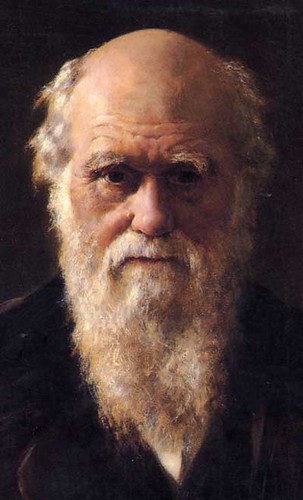
Charles Darwin was a bald scientist with very bushy sideburns (you should see pictures of the guy – what a puss!). He wrote a book called “The Origin of Species” that many science and fact-based people believe explains evolution and how humans, animals, plants, and insects came into being. The book is very boring, but it argues that organisms gradually evolve through a process called natural selection. Natural selection is the theory (which is a fancy way of saying “guess”) that individual organisms struggle to survive and those with the best or most favorable characteristics will be more likely to survive. As a result, those favorable traits will be passed onto their offspring and become the dominant characteristics among organisms. Blah, blah, blah.
It’s this outlandish and wildly irresponsible theory where
You can almost see God rolling his eyes in heaven over this ridiculous notion. Scientists want us to put their trust in them – but aren’t they the ones who developed the nuclear bomb and can’t even figure out a good diet?
The problem with Darwinism (and the science it is based on) is that it often relies too broadly on facts rather than on common sense. Where I come from, we go by the old saw “Keep It Simple Stupid.” In other words, the simple solution or answer is usually the right one. So let me ask all of you, which scenario is more likely:
Scenario #1
Life evolved slowly over hundreds of million years with animals and plants branching off into different species and sub-species as they began to react and modify their traits to adapt to their environment. The stronger traits – the ones that helped them survive best – dominated and the weaker characteristics simply died out. The result was a natural balance where plants, animals, insects all live, thrive and, prey on each other in a complicated and complex eco-system. From this system, humans eventually evolved from  apes over millions of years.
apes over millions of years.
Scenario #2
An all-mighty, all-knowing, all-powerful Supreme Being created the universe in six days. He created man in his image from a mold made of dust and breathed life into him. From man’s rib, he created woman and then put them in the Garden of Eden on Earth. All of us originate from this first pair of human beings.
I know, I know, the second scenario has a certain poetry to it, but it also rings true. You can feel its truth! The first scenario is just silly. Do you know how many things had to fall into place for man to be created? Lots of them. You’d have a better chance of winning the lottery!
No wonder Darwinism is a theory – and not even a good one.
I’ve developed a new habit. Every time I hear someone blabbing on about Darwinism – I send them a Bible. Maybe I should do the same for Dennett and Dawkins. Then, maybe, they’ll learn something.
(The Rev. Colson Crosslick is pastor of the
Click the links below to read more of Rev. Crosslick's incredible insights on:
The Disease of Liberalism
Satan & Comic Books
Labels: Darwin, Under God's Right Arm
 StumbleUpon |
StumbleUpon |
 del.icio.us |
del.icio.us |
 Technorati |
Technorati |
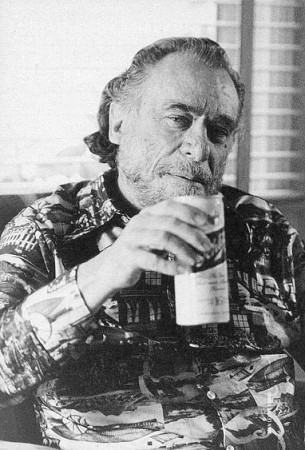
I am standing in front
of the house on Edgewater Terrace,
high on speed,
screaming at the ghost of a poet,
watching him vomit in the front yard ivy.
The chaos is breaking out amongst
the meat puppet muses
in the house I call home—
I’m rushing towards that
gorgeous poetic image
that the whole world is waiting for.
I walk in the house,
past John Bennett,
past my Aunt Linda,
past my Mother,
past half the worthless
drunken word shepherds in L.A.
Past the drunken actors,
past the stoned painters,
past the posers in gauze shirts,
finally, past Bukowski himself,
trying to hold court from a blackout.
He lets out a howl, says, “Where ya’ goin’ Kid?”
“Up to my room, Hank,” I say,
“Where you going, to NASA?”
He stares at me for a moment,
trying to gage if my intent is funny or folly,
I don’t give him a chance,
I’m off to my room,
to the roof to smoke a joint.
The gray dome of LA looms above my head
I’m in seventeen-year-old angst—
cursing all poets,
cursing all writers,
cursing all the sons and daughters of writers.
I yell at the smog,
it is blocking my way to the stars,
I yell at the moon
it hasn’t a face,
I yell at God
because he left town after the earthquake of 1971.
I hear the voices of my Aunt Linda
and Mother downstairs,
laughing at the wit of the great drunken poet,
like shills charming up the great joke--
it spills across the room like a brush fire.
The room burns up,
I hear the devil beckoning me to suicide—
I hear the great emptiness of the silver lakes—
I hear the roar of all the lost young souls on rooftops.
I smoke another joint,
I am beginning to hallucinate,
the voices downstairs seem comical now—
the poets are all Saturday morning cartoons,
I walk down to see the show.
I go to the fridge to get a beer,
the great drunken poet meets me—
my hand reaches for the writing fuel,
He says to me,
“Have a Schlitz, Kid, just don’t tell your Mother I gave it to you.”
I want to say,
“Thank you great drunken poet!,
thank you for giving me what young poets in training need!”
I don’t... I don’t say anything,
instead, I laugh at the great drunken poet’s wit,
like everyone else--ashamed of all of us.
I go back up to the roof for another joint,
suddenly,
I'm sobbing,
suddenly,
I'm shaking,
I'm looking for
the way down from the speed,
I'm looking for
the way back to God,
the way back to my lost childhood,
I'm looking for
the way to death,
the way through the smog,
I'm looking for
the way to my high school graduation,
the way to satisfy this great emptiness,
I'm looking for
the way to Paradise,
the way to find some fucking courage--
the way to find some fucking courage!
It's screaming, I'm screaming--
everyone is screaming! I'm... I'm screaming.
No, I'm only sobbing.
I'm only sobbing.
Emptied out.
I'm looking for
the way--
I'm looking for the way far away from great drunken poets.
(This is Raymond's second poem at DaRK PaRTY. Yes, he really knew Author and Poet Charles Bukowski and, yes, he called Buk "Hank" and Buk called him "Kid." Raymond directs the theater and film program at Metro Arts Institute in Phoenix, Arizona. Raymond has been working in the theater and film business for 20 years. His plays are published by Samuel French and Anchorage Press. He also designs, acts, directs, teaches and writes, and was most currently awarded the Arizona Commission on the Arts Playwriting Fellowship in 2003.)
Read Raymond King Shurtz's poem "Stars Get in the Way of Things" here
Read our 5 Questions Interview about Charles Bukowski here
 StumbleUpon |
StumbleUpon |
 del.icio.us |
del.icio.us |
 Technorati |
Technorati |
My buddy, an accountant for a national auditing firm, bought a brand-new tie-dye t-shirt the day before a Grateful Dead concert at Foxboro Stadium in Massachusetts.
He looked like a walking Life Saver. The colors were so vibrant – so damn bright that you had to squint when you looked at him. The tie-dye was accompanied by a pair of pressed khaki shorts and a short, bristled corporate hair cut.
This was back in the early 1990s – and despite not having had a hit album in several years – the Dead continued to be a hot live act. There was a reason for that – few bands reached the musical achievements of the Dead in concert. Their shows were free-wheeling jam sessions that infused listeners with a remarkable sense of joy, freedom, and fellowship.
Before the show, my accountant friend and I walked through the camp village that cropped up at any Dead concert. These camps – filled with diehard Deadheads – resembled gypsy caravans; nomadic villages filled with campers, tents, food stands, and T-shirt shops. It was also a thriving black market for illegal drugs.
As we strolled through, we were accosted by dozens of Deadheads convinced my friend was an undercover police officer. The shouts of “Narc! Narc!” followed us through the windy corridors of the camp. It got so bad that we had to flee.
The concert was amazing – per usual. I lost track of my friend and after the show, we couldn’t find him. We looked everywhere. Finally, on the ride back to my house, we saw him staggering down the side of the road. A red bandana was wrapped around his haircut, his shirt was off and tucked into the pocket of his know filthy shorts. He was singing “Little Red Rooster” at the top of his lungs.
At the show, he had graciously accepted an offer of water from a Deadhead. Said water was laced with acid.
His transformation was complete: from alleged Narc to one of the messy, free-spirited fellowship.
What follows is DaRK PaRTY’s attempt to list the greatest dozen Grateful Dead songs of all time:
Little Red Rooster
This song was originally written by  o one of the band’s favorite concert tunes.
o one of the band’s favorite concert tunes.
Althea
“Althea” can be found on the band’s much maligned 1980 release “Go to Heaven.” Critics and Deadhead’s panned this album, yet it contains a surprising number of excellent songs – of which “Althea” is one of the best. While the studio version is decent, the live version is hard to beat. The song features a cascading, funky backbeat and some lyrical guitar work that gets your head bobbing.
Franklin’s Tower
Featured on the band’s “Blues for Allah” album released in 1974, “
Scarlet Begonias
“Scarlet Begonias” (often called “Scarlet Fire” because it was paired with “Fire on the Mountain” during many live shows) may be the Dead’s best pop song. It has a carefree Top 40 appeal to it, yet it feels like the Dead. The song comes from the underrated “The Grateful Dead From the Mars Hotel” made in 1974. It has been covered several times by Sublime, Jimmy Buffet, and Phish.
This song appears for the first time on the band’s famous live album “
Ripple
“Ripple” appears on the Dead’s second album “American Beauty” (1970). It’s a country-infused ballad driven by the mellow strummings of an acoustic guitar. Simple, infectious, and one of those magical songs that makes you think about walking along a sun-drenched beach in the summer.
Fire on the Mountain
The second part of the “Scarlet Fire” duo. “Fire on the Mountain” first appeared on the album “
New
This song rocks. It’s a twangy folk song with a terrific backbeat. “New Speedway Boogie” appears on the 1970 album “Workingman’s Dead” (which is one of the band’s best). You can’t listen to this one without feeling like you need to get up on your feet and twirl.
Terrapin Station
The title song from the 1977 “Terrapin Station” album sounds like it could have been performed by Genesis on acid. It has a big, booming sound with multiple layers – horns, strings, and symphonic movement. But “Terrapin Station” is lyrical and harmonic. Every time you listen to it there’s a hidden bit that reveals itself.
time you listen to it there’s a hidden bit that reveals itself.
Try not to think about moonshine, creeks, and hollows when listening to this southern-fried country rocker. This is another song that made its first appearance on “
Mountains of the Moon
One of the Dead’s best acoustic songs is “Mountains of the Moon.” It was born on the album “Aoxomoxoa” in 1969 and has remained an underrated Dead song. “Mountains” captures the essence of the Dead when they strip down their music to its essential roots.
Estimated Prophet
Another great song from the “Terrapin Station” album. This one a rollicking, reggae-influenced song that sounds like Bob Marley rocking out with The Band. The backbeat keeps this one kicking as Jerry really lets his guitar twang. It was a popular live song for the band.
Read our picks for the best of R.E.M.'s more obscure music here
Read our Five Questions About interview on Led Zeppelin here
Labels: Grateful Dead, Music
 StumbleUpon |
StumbleUpon |
 del.icio.us |
del.icio.us |
 Technorati |
Technorati |

This work is licensed under a Creative Commons Attribution-No Derivative Works 3.0 License.
The Template is generated via PsycHo and is Licensed.

